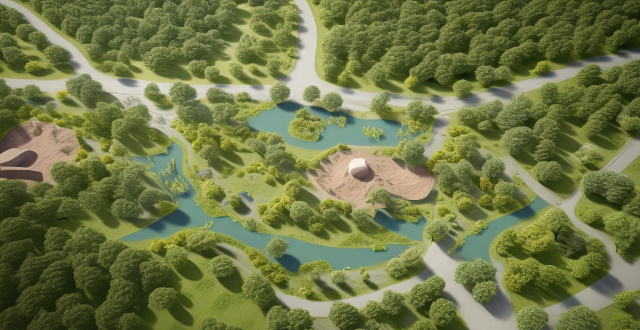Ecological protection areas play a crucial role in preserving biodiversity, maintaining ecosystem services, and protecting natural landscapes. Successful examples include the Great Barrier Reef Marine Park in Australia, Yellowstone National Park in the United States, Galapagos National Park in Ecuador, Banff National Park in Canada, and Sian Ka'an Biosphere Reserve in Mexico. These areas have implemented various management strategies such as zoning systems, reintroducing wolves, controlling invasive species, promoting sustainable tourism practices, involving local communities in conservation efforts, and restoring degraded areas.

Successful Examples of Ecological Protection Areas Around the World
Ecological protection areas play a crucial role in preserving biodiversity, maintaining ecosystem services, and protecting natural landscapes. Here are some successful examples of ecological protection areas around the world:
1. Great Barrier Reef Marine Park (Australia)
- The Great Barrier Reef Marine Park is the largest marine protected area in the world, covering an area of approximately 344,400 square kilometers.
- It includes a diverse range of habitats such as coral reefs, seagrass beds, and mangrove forests.
- The park has implemented a zoning system to manage different activities and protect sensitive areas from overexploitation.
- Efforts have been made to reduce pollution, control invasive species, and promote sustainable tourism practices.
2. Yellowstone National Park (United States)
- Yellowstone National Park was established in 1872 as the first national park in the United States.
- It spans over 2 million acres and is home to a variety of wildlife species, including grizzly bears, wolves, and bison.
- The park has implemented measures to protect its natural resources, such as reintroducing wolves and managing human impact on the ecosystem.
- Educational programs and visitor centers help raise awareness about conservation and responsible recreation within the park.
3. Galapagos National Park (Ecuador)
- The Galapagos National Park covers about 97% of the Galapagos Islands and encompasses both terrestrial and marine ecosystems.
- It is known for its unique biodiversity, including endemic species like giant tortoises and marine iguanas.
- Conservation efforts focus on controlling invasive species, protecting endangered animals, and promoting sustainable fishing practices.
- The park works closely with local communities to ensure their involvement in conservation initiatives and benefit from ecotourism opportunities.
4. Banff National Park (Canada)
- Banff National Park is located in the Canadian Rockies and covers an area of 6,641 square kilometers.
- It boasts stunning landscapes, including glaciers, mountains, forests, and lakes.
- The park has implemented strict regulations to protect its fragile ecosystems, such as limiting backcountry camping and restricting off-road vehicle access.
- Research stations within the park conduct studies on climate change, wildlife populations, and other environmental issues affecting the region.
5. Sian Ka'an Biosphere Reserve (Mexico)
- Sian Ka'an Biosphere Reserve is located on the eastern coast of Mexico's Yucatan Peninsula.
- It encompasses a wide range of habitats, including mangrove forests, coral reefs, and coastal dunes.
- The reserve has implemented community-based conservation programs that involve local Mayan communities in protecting their natural resources through sustainable tourism and fishing practices.
- Efforts have been made to restore degraded areas by planting native vegetation and controlling invasive species.
These examples demonstrate how effective ecological protection areas can be when proper management strategies are implemented and local communities are involved in conservation efforts.